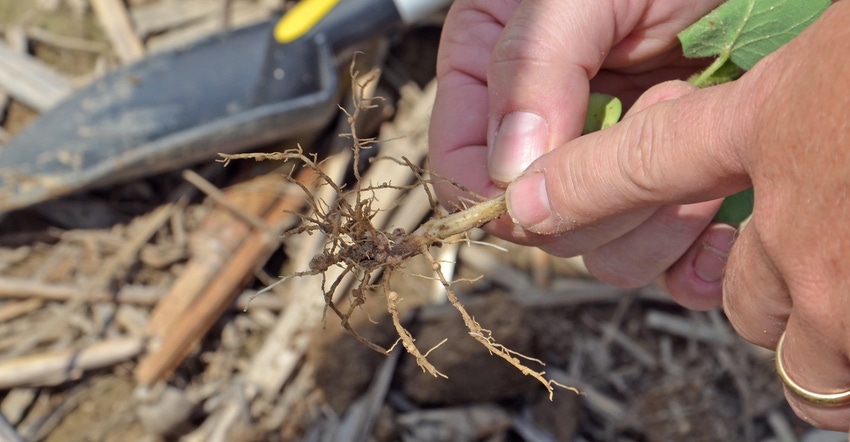February 3, 2022

We didn’t get fertilizer applied last fall. The plan is applying phosphorus and potassium ahead of planting where soil test levels are low or medium. Is this cost-effective?
The Indiana certified crop adviser panel answering this question includes Gene Flaningam, Flaningam Ag Consulting LLC, Vincennes; Brian Mitchem, area manager for Nutrien Ag Solutions/Loveland Products, Decatur; Jeff Nagel, agronomist for Ceres Solutions, Lafayette; and Shaun Casteel, Purdue University Extension soybean specialist, West Lafayette.
Flaningam: Soybeans seem to respond better to “soil fertility” rather than applied fertilizer. That said, it’s important to apply P and K at least two to three weeks prior to planting soybeans. There is university research showing yield reductions from chlorides in spring-applied potash. If soil tests are low, I would still consider doing some sort of P and K application before planting.
Mitchem: If you don’t have recent soil test information, start there. With current potassium prices, applying product on low- to medium-testing soils for K maintenance is warranted. We now understand there is a different K requirement based off type of clay parent material as opposed to the old way of managing K based off soil cation exchange capacity levels. Consider tissue samples in-season and pay particular attention to K needs. The only pitfall with spring K applications is that some soybean varieties can be negatively impacted by chloride in KCl.
With phosphorus, I would only apply broadcast product on low-testing soils. It is very difficult to drive consistent yield response to “medium plus” levels of phosphorus. Consider two-by-two placement of starter P as needed.
Nagel: Your approach makes sense. The point of intensive soil testing is to identify variability of nutrients and allocate lime and fertilizer input dollars for the best return on investment. The probability and magnitude of yield response to applied fertilizer will be greater in lower-testing soils.
This could be a good year to focus more on optimizing return on investment rather than building up soil test levels. In high-testing areas, fertilizer applications can be reduced or omitted with minimal or no negative impact on yield.
Read Shaun Casteel’s comments on potassium chloride research carefully. Getting yield benefit on low-to-medium K soils with applied fertilizer will outweigh any potential yield penalty.
Casteel: Fields below critical levels will benefit from application of P and K during late winter to early spring. One word of caution is the timing and amount of K applied as muriate of potash, which is 0-0-60, or potassium chloride, ahead of soybeans.
We have documented yield decreases of 3 to 5 bushels per acre from 60 to 120 pounds per acre of K2O applied close to planting. This yield hit occurred in one-third of our trials in soils that were above critical levels. We believe it’s due to a chloride toxicity/salt burn to developing roots, nodules and young seedlings.
If the field is low in K, apply potash as early as possible to allow rain to work chloride through the soil. Another option is applying K after soybeans emerge. Talk with your seed dealer about varieties that limit uptake of chloride, which is termed chloride excluder. If a field needs K, planting a chloride excluder is another layer of management, provided yield potential and management traits are still available. A chloride includer would presumably be more sensitive to chloride.
You May Also Like




